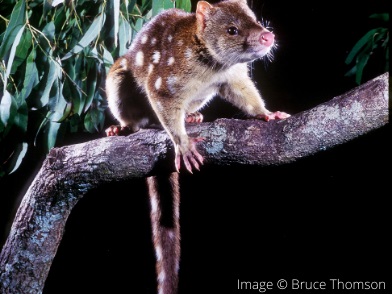On 30 April 2021, 46 reclassifications were made to the conservation status of fauna and flora species under the Nature Conservation Act 1992 (NCA) and updated within the WildNet database.

These include:
- the reclassification of 17 fauna species under the Animals Regulation Schedule 1
- the reclassification of 29 flora species under the Plants Regulation Schedule 1.
The changes are reflected in Nature Conservation and Other Legislation Amendment Regulation 2021 Subordinate Legislation 2021 No. 36.
Common Assessment Method (CAM)
The purpose of these reclassifications is to ensure the current status is correct and to improve the alignment between Queensland and national environmental legislation.
Assessments to species’ classifications are made under the new Common Assessment Method (CAM), introduced in August 2020, which provides a nationally consistent approach to assessing and listing threatened species across Australian jurisdictions. While the CAM assessment processes are based on the International Union for the Conservation of Nature (IUCN) Red List threat categories and criteria the CAM system does not mirror the IUCN system.
In Queensland, the assessment process is undertaken by the Queensland Species Technical Committee (QSTC). The QSTC comprises recognised experts from both within and external to the Queensland Public Service.
Wildlife Queensland supports this arrangement as it brings a degree of independence and transparency to the findings of the QSTC. The fact that the Commonwealth Government and most state and territory governments have signed up to an intergovernmental agreement to deliver a CAM for assessing the conservation status of all Australian threatened species is positive.
Furthermore, such a move has introduced new categories such as ‘critically endangered’ into the NCA categories.
Wildlife Queensland welcomes the fact that the QSTC is actively reviewing the conservation status of Queensland’s fauna and flora with an initial focus on aligning species’ classifications in the commonwealth (Environmental Protection and Biodiversity Conservation Act 1999) and state (Queensland Nature Conservation Act 1992) legislation.
With some 700 odd species requiring assessment, the task will take some time.
About the Recent Species’ Reclassifications
A number of factors must be taken into consideration when viewing the recent amendments to the conservation status of species:
- The conservation status of many of the species reviewed recently has been changed to ‘critically endangered’. This does not necessarily reflect that the species is more exposed or subject to additional threats. That may have been the appropriate conservation status previously but the critically endangered category was not previously available under Queensland NCA Regulations.
- A contributing factor to the significant number of changes to the conservation status of species is better quality information on which to base the assessment.
- There is a distinct bias in the species selected or nominated for review with a focus on species considered to be of most concern.
- One species had the conservation status lowered from vulnerable to least concern and another was no longer recognised as a distinct species. Such an outcome only lends support for the ongoing review of the conservation status of species.
Wildlife Queensland would be the first to acknowledge that the knowledge of Queensland’s regional ecosystems is second to none in Australia, but more flora surveys are required and pleas for a systematic survey of Queensland’s fauna have been falling on deaf ears of the Government since at least the 1980s.
While major steps in the right direction have occurred regarding vegetation clearing legislation, threatened species – both flora and fauna – can still be impacted. Queensland can do better. Queensland must do better. In the meantime, the Palaszczuk Government is at least doing the right thing in reviewing the conservation status of our species.
